Adel M. Alimi
TinySiamese Network for Biometric Analysis
Jul 02, 2023Abstract:Biometric recognition is the process of verifying or classifying human characteristics in images or videos. It is a complex task that requires machine learning algorithms, including convolutional neural networks (CNNs) and Siamese networks. Besides, there are several limitations to consider when using these algorithms for image verification and classification tasks. In fact, training may be computationally intensive, requiring specialized hardware and significant computational resources to train and deploy. Moreover, it necessitates a large amount of labeled data, which can be time-consuming and costly to obtain. The main advantage of the proposed TinySiamese compared to the standard Siamese is that it does not require the whole CNN for training. In fact, using a pre-trained CNN as a feature extractor and the TinySiamese to learn the extracted features gave almost the same performance and efficiency as the standard Siamese for biometric verification. In this way, the TinySiamese solves the problems of memory and computational time with a small number of layers which did not exceed 7. It can be run under low-power machines which possess a normal GPU and cannot allocate a large RAM space. Using TinySiamese with only 8 GO of memory, the matching time decreased by 76.78% on the B2F (Biometric images of Fingerprints and Faces), FVC2000, FVC2002 and FVC2004 while the training time for 10 epochs went down by approximately 93.14% on the B2F, FVC2002, THDD-part1 and CASIA-B datasets. The accuracy of the fingerprint, gait (NM-angle 180 degree) and face verification tasks was better than the accuracy of a standard Siamese by 0.87%, 20.24% and 3.85% respectively. TinySiamese achieved comparable accuracy with related works for the fingerprint and gait classification tasks.
SDT-DCSCN for Simultaneous Super-Resolution and Deblurring of Text Images
Jan 15, 2022Abstract:Deep convolutional neural networks (Deep CNN) have achieved hopeful performance for single image super-resolution. In particular, the Deep CNN skip Connection and Network in Network (DCSCN) architecture has been successfully applied to natural images super-resolution. In this work we propose an approach called SDT-DCSCN that jointly performs super-resolution and deblurring of low-resolution blurry text images based on DCSCN. Our approach uses subsampled blurry images in the input and original sharp images as ground truth. The used architecture is consists of a higher number of filters in the input CNN layer to a better analysis of the text details. The quantitative and qualitative evaluation on different datasets prove the high performance of our model to reconstruct high-resolution and sharp text images. In addition, in terms of computational time, our proposed method gives competitive performance compared to state of the art methods.
Handwriting Quality Analysis using Online-Offline Models
Oct 09, 2020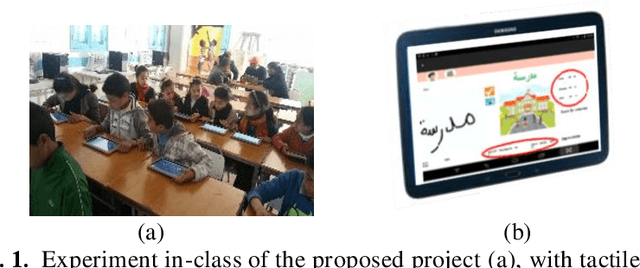


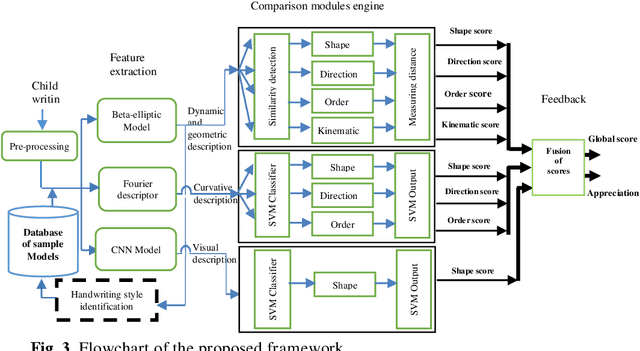
Abstract:This work is part of an innovative e-learning project allowing the development of an advanced digital educational tool that provides feedback during the process of learning handwriting for young school children (three to eight years old). In this paper, we describe a new method for children handwriting quality analysis. It automatically detects mistakes, gives real-time on-line feedback for children's writing, and helps teachers comprehend and evaluate children's writing skills. The proposed method adjudges five main criteria shape, direction, stroke order, position respect to the reference lines, and kinematics of the trace. It analyzes the handwriting quality and automatically gives feedback based on the combination of three extracted models: Beta-Elliptic Model (BEM) using similarity detection (SD) and dissimilarity distance (DD) measure, Fourier Descriptor Model (FDM), and perceptive Convolutional Neural Network (CNN) with Support Vector Machine (SVM) comparison engine. The originality of our work lies partly in the system architecture which apprehends complementary dynamic, geometric, and visual representation of the examined handwritten scripts and in the efficient selected features adapted to various handwriting styles and multiple script languages such as Arabic, Latin, digits, and symbol drawing. The application offers two interactive interfaces respectively dedicated to learners, educators, experts or teachers and allows them to adapt it easily to the specificity of their disciples. The evaluation of our framework is enhanced by a database collected in Tunisia primary school with 400 children. Experimental results show the efficiency and robustness of our suggested framework that helps teachers and children by offering positive feedback throughout the handwriting learning process using tactile digital devices.
Neural Architecture based on Fuzzy Perceptual Representation For Online Multilingual Handwriting Recognition
Aug 01, 2019
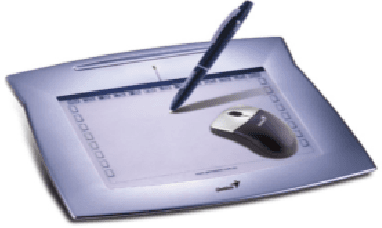
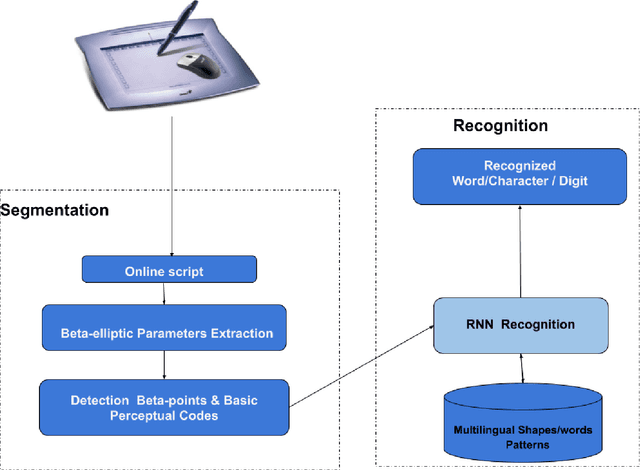
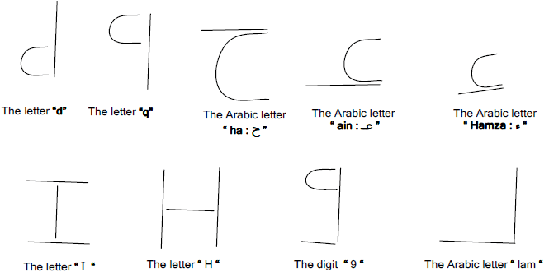
Abstract:Due to the omnipresence of mobile devices, online handwritten scripts have become the most important feeding input to smartphones and tablet devices. To increase online handwriting recognition performance, deeper neural networks have extensively been used. In this context, our paper handles the problem of online handwritten script recognition based on extraction features system and deep approach system for sequences classification. Many solutions have appeared in order to facilitate the recognition of handwriting. Accordingly, we used an existent method and combined with new classifiers in order to get a flexible system. Good results are achieved compared to online characters and words recognition system on Latin and Arabic scripts. The performance of our two proposed systems is assessed by using five databases. Indeed, the recognition rate exceeds 98%.
* 15 pages; 17 figures
Dynamic Multi Objective Particle Swarm Optimization based on a New Environment Change Detection Strategy
Mar 25, 2019
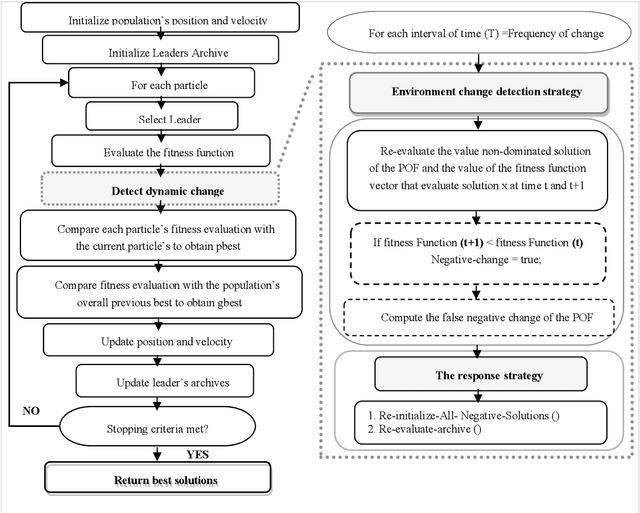
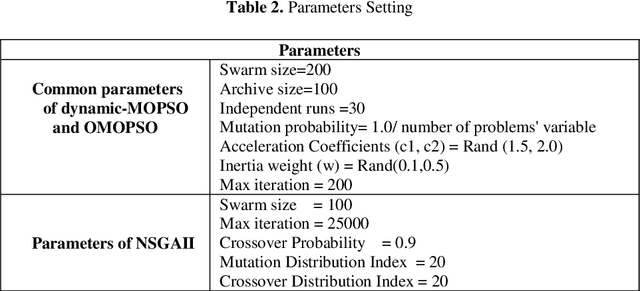
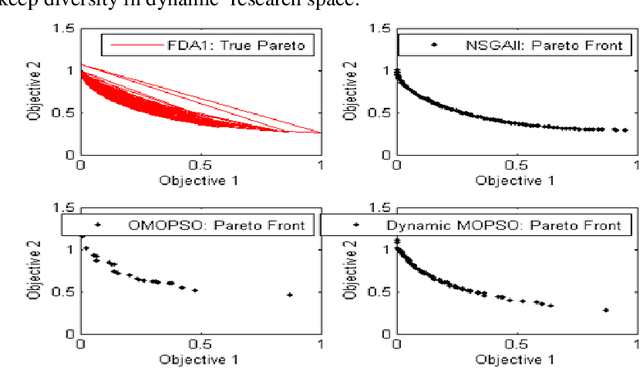
Abstract:The dynamic of real-world optimization problems raises new challenges to the traditional particle swarm optimization (PSO). Responding to these challenges, the dynamic optimization has received considerable attention over the past decade. This paper introduces a new dynamic multi-objective optimization based particle swarm optimization (Dynamic-MOPSO).The main idea of this paper is to solve such dynamic problem based on a new environment change detection strategy using the advantage of the particle swarm optimization. In this way, our approach has been developed not just to obtain the optimal solution, but also to have a capability to detect the environment changes. Thereby, DynamicMOPSO ensures the balance between the exploration and the exploitation in dynamic research space. Our approach is tested through the most popularized dynamic benchmark's functions to evaluate its performance as a good method.
Multi Objective Particle Swarm Optimization based Cooperative Agents with Automated Negotiation
Jan 27, 2019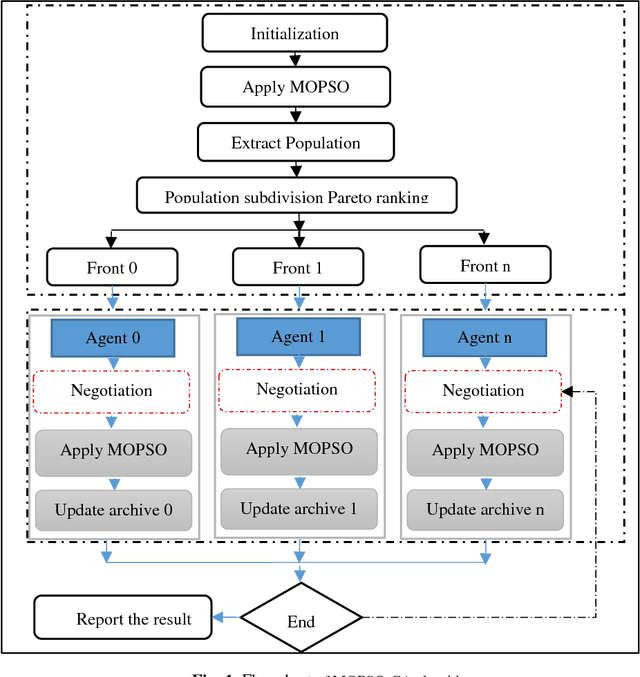
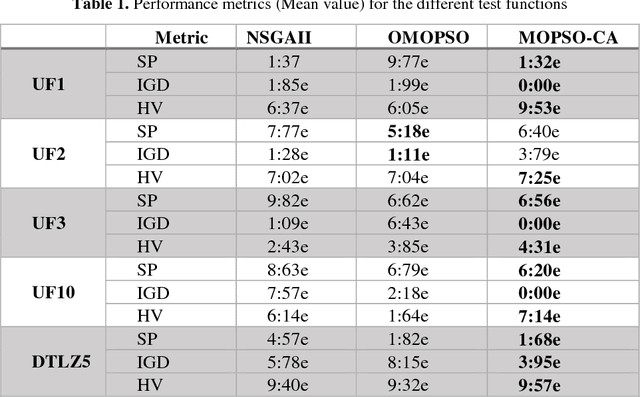
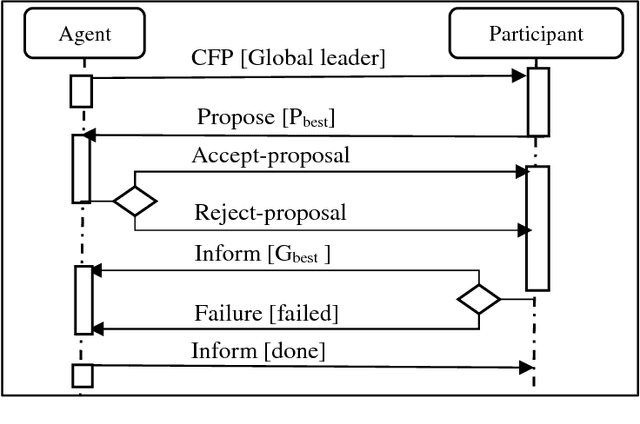
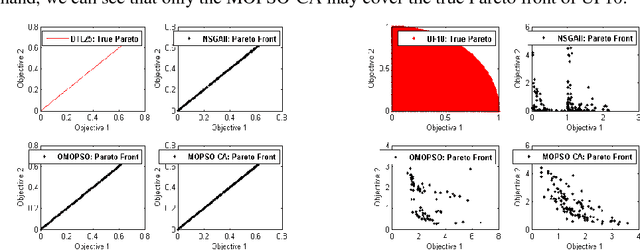
Abstract:This paper investigates a new hybridization of multi-objective particle swarm optimization (MOPSO) and cooperative agents (MOPSO-CA) to handle the problem of stagnation encounters in MOPSO, which leads solutions to trap in local optima. The proposed approach involves a new distribution strategy based on the idea of having a set of a sub-population, each of which is processed by one agent. The number of the sub-population and agents are adjusted dynamically through the Pareto ranking. This method allocates a dynamic number of sub-population as required to improve diversity in the search space. Additionally, agents are used for better management for the exploitation within a sub-population, and for exploration among sub-populations. Furthermore, we investigate the automated negotiation within agents in order to share the best knowledge. To validate our approach, several benchmarks are performed. The results show that the introduced variant ensures the trade-off between the exploitation and exploration with respect to the comparative algorithms
DASPS: A Database for Anxious States based on a Psychological Stimulation
Jan 09, 2019
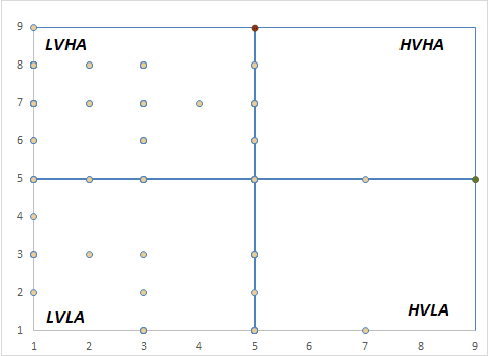
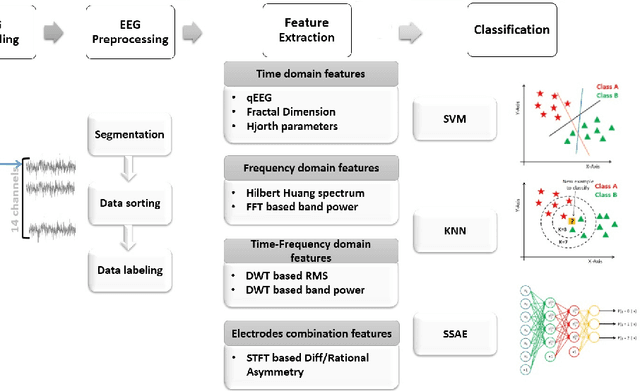
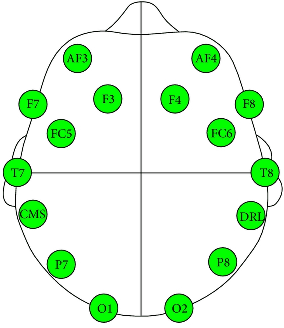
Abstract:Anxiety affects human capabilities and behavior as much as it affects productivity and quality of life. It can be considered as the main cause of depression and suicide. Anxious states are easily detectable by humans due to their acquired cognition, humans interpret the interlocutor's tone of speech, gesture, facial expressions and recognize their mental state. There is a need for non-invasive reliable techniques that performs the complex task of anxiety detection. In this paper, we present DASPS database containing recorded Electroencephalogram (EEG) signals of 23 participants during anxiety elicitation by means of face-to-face psychological stimuli. EEG signals were captured with Emotiv Epoc headset as it's a wireless wearable low-cost equipment. In our study, we investigate the impact of different parameters, notably: trial duration, feature type, feature combination and anxiety levels number. Our findings showed that anxiety is well elicited in 1 second. For instance, stacked sparse autoencoder with different type of features achieves 83.50% and 74.60% for 2 and 4 anxiety levels detection, respectively. The presented results prove the benefits of the use of a low-cost EEG headset instead of medical non-wireless devices and create a starting point for new researches in the field of anxiety detection.
Auto-Encoder-BoF/HMM System for Arabic Text Recognition
Jan 08, 2019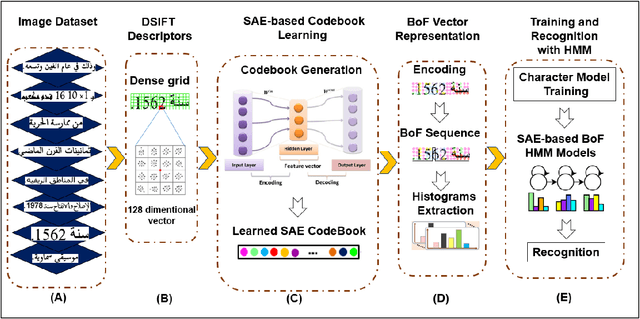
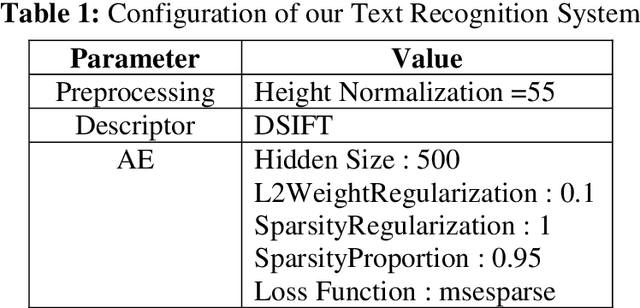

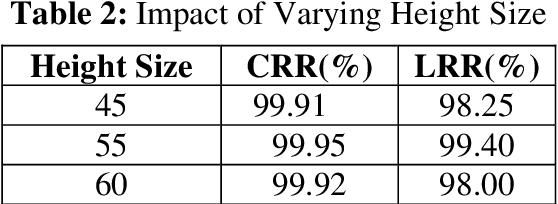
Abstract:The recognition of Arabic text, in both handwritten and printed forms, represents a fertile provenance of technical difficulties for Optical Character Recognition (OCR). Indeed, the printed is commonly governed by well-established calligraphy rules and the characters are well aligned. However, there is not always a system capable of reading Arabic printed text in an unconstrained environments such as unlimited vocabulary, multi styles, mixed-font and their great morphological variability. This diversity complicates the choice of features to extract and algorithm of segmentation. In this context, we adopt a new solution for unlimited-vocabulary and mixed-font Arabic printed text recognition. The proposed system is based on the adoption of Bag of Features (BoF) model using Sparse Auto-Encoder (SAE) for features representation and Hidden Markov Models (HMM) for recognition. As results, the obtained average accuracies of recognition vary between 99.65% and 99.96% for the mono-font and exceed 99% for mixed-font.
Interval type-2 Beta Fuzzy Near set based approach to content based image retrieval
Dec 07, 2018
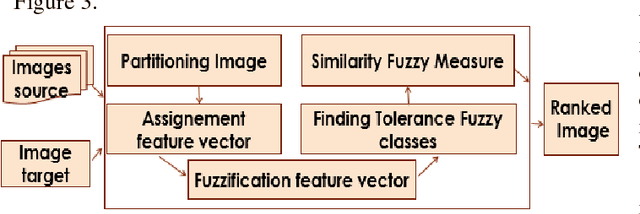
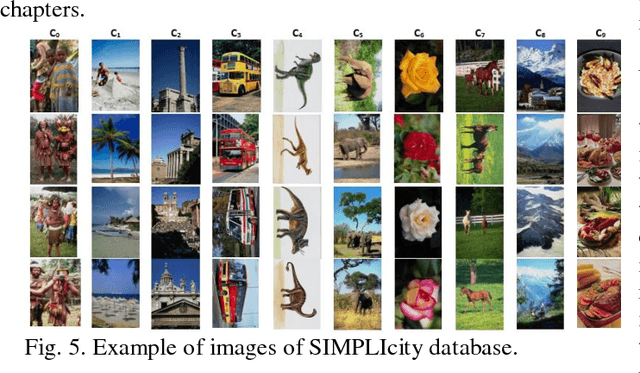

Abstract:In an automated search system, similarity is a key concept in solving a human task. Indeed, human process is usually a natural categorization that underlies many natural abilities such as image recovery, language comprehension, decision making, or pattern recognition. In the image search axis, there are several ways to measure the similarity between images in an image database, to a query image. Image search by content is based on the similarity of the visual characteristics of the images. The distance function used to evaluate the similarity between images depends on the criteria of the search but also on the representation of the characteristics of the image; this is the main idea of the near and fuzzy sets approaches. In this article, we introduce a new category of beta type-2 fuzzy sets for the description of image characteristics as well as the near sets approach for image recovery. Finally, we illustrate our work with examples of image recovery problems used in the real world.
An Evolutionary Hierarchical Interval Type-2 Fuzzy Knowledge Representation System (EHIT2FKRS) for Travel Route Assignment
Dec 05, 2018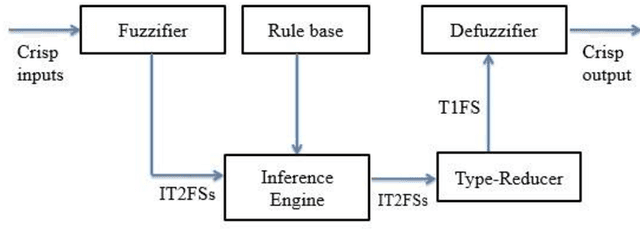
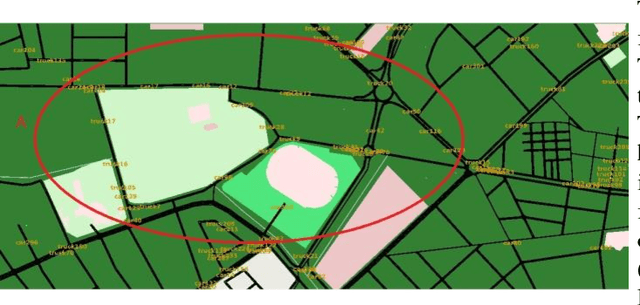
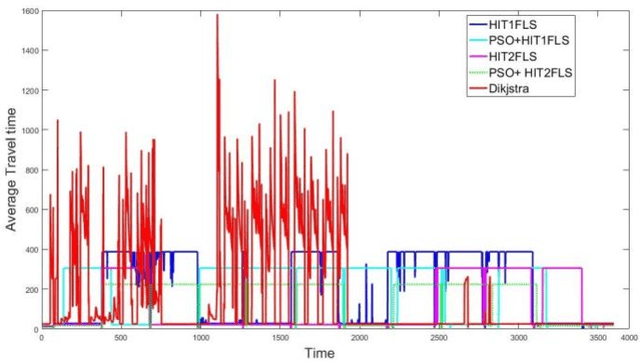
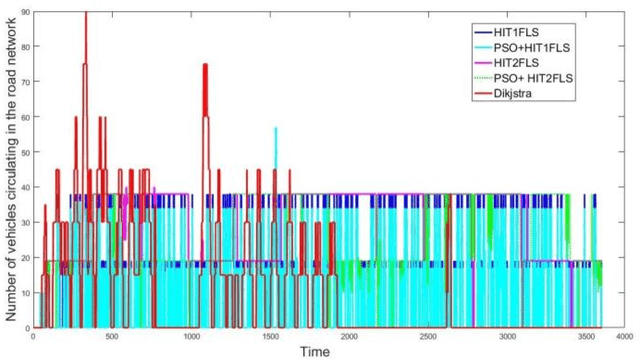
Abstract:Urban Traffic Networks are characterized by high dynamics of traffic flow and increased travel time, including waiting times. This leads to more complex road traffic management. The present research paper suggests an innovative advanced traffic management system based on Hierarchical Interval Type-2 Fuzzy Logic model optimized by the Particle Swarm Optimization (PSO) method. The aim of designing this system is to perform dynamic route assignment to relieve traffic congestion and limit the unexpected fluctuation effects on traffic flow. The suggested system is executed and simulated using SUMO, a well-known microscopic traffic simulator. For the present study, we have tested four large and heterogeneous metropolitan areas located in the cities of Sfax, Luxembourg, Bologna and Cologne. The experimental results proved the effectiveness of learning the Hierarchical Interval type-2 Fuzzy logic using real time particle swarm optimization technique PSO to accomplish multiobjective optimality regarding two criteria: number of vehicles that reach their destination and average travel time. The obtained results are encouraging, confirming the efficiency of the proposed system.
 Add to Chrome
Add to Chrome Add to Firefox
Add to Firefox Add to Edge
Add to Edge